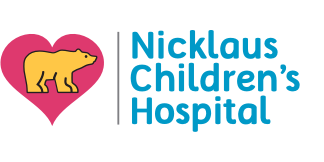- Parents Home
- Para Padres
- Allergy Center
- Asthma Center
- Cancer Center
- Diabetes Center
- Diseases & Conditions
- Doctors & Hospitals
- Emotions & Behavior
- First Aid & Safety
- Flu Center
- Food Allergy Center
- General Health
- Growth & Development
- Heart Health
- Homework Help Center
- Infections
- Newborn Center
- Nutrition & Fitness Center
- Play & Learn Center
- Pregnancy Center
- Q&A
- Recipes
- School & Family Life
- Sports Medicine Center
- Videos
- Kids Home
- Para Niños
- Asthma Center
- Cancer Center
- Diabetes Center
- Feelings
- Getting Help
- Health Problems
- Health Problems of Grown-Ups
- Heart Center
- Homework Center
- How the Body Works
- Illnesses & Injuries
- Kids' Medical Dictionary
- Movies & More
- Nutrition & Fitness Center
- Puberty & Growing Up
- Q&A
- Recipes & Cooking
- Relax & Unwind Center
- Stay Safe Center
- Staying Healthy
- Staying Safe
- Videos
- Teens Home
- Para Adolescentes
- Asthma Center
- Be Your Best Self Center
- Cancer Center
- Diabetes Center
- Diseases & Conditions
- Drugs & Alcohol
- Expert Answers (Q&A)
- Flu Center
- Homework Help Center
- Infections
- Managing Your Medical Care
- Managing Your Weight
- Nutrition & Fitness Center
- Recipes
- Safety & First Aid
- School & Work
- Sports Center
- Stress & Coping Center
- Videos
- Your Body
- Your Mind
A to Z: Stevens-Johnson Syndrome
May also be called: SJS; Erythema Multiforme Major; Lyell's Syndrome; Toxic Epidermal Necrolysis.
Stevens-Johnson syndrome is a rare inflammatory disorder affecting the skin and mucous membranes. It's usually triggered by exposure to an infection or a medication.
More to Know
In Stevens-Johnson syndrome, the immune system overreacts to a medication or infection. This causes flu-like symptoms, fever, blistering of the mucous membranes, and a red or purplish rash. In places, the top layer of skin may separate from the underlying layers, blister, and shed, leaving raw, exposed skin.
SJS usually affects the mouth, nose, and eyes, but also can occur in the mucous membranes lining the ears; eyes; vagina; and urinary, respiratory, and gastrointestinal tracts.
Medications that are most likely to be involved in Stevens-Johnson syndrome include certain antibiotics, anti-seizure medications, and pain relievers. In children, infections with herpes viruses or Mycoplasma pneumoniae bacteria are often triggers.
Keep in Mind
Stevens-Johnson syndrome is a serious condition that requires immediate medical attention. If the trigger of the condition can be identified and avoided, a recurrence of Stevens-Johnson syndrome is unlikely. However, some cases happen without any known trigger.
In a similar but more severe form of the condition known as toxic epidermal necrolysis, greater areas of skin shedding occurs that can be life threatening.
All A to Z dictionary entries are regularly reviewed by KidsHealth medical experts.

© 1995- The Nemours Foundation. KidsHealth® is a registered trademark of The Nemours Foundation. All rights reserved.
Images sourced by The Nemours Foundation and Getty Images.

